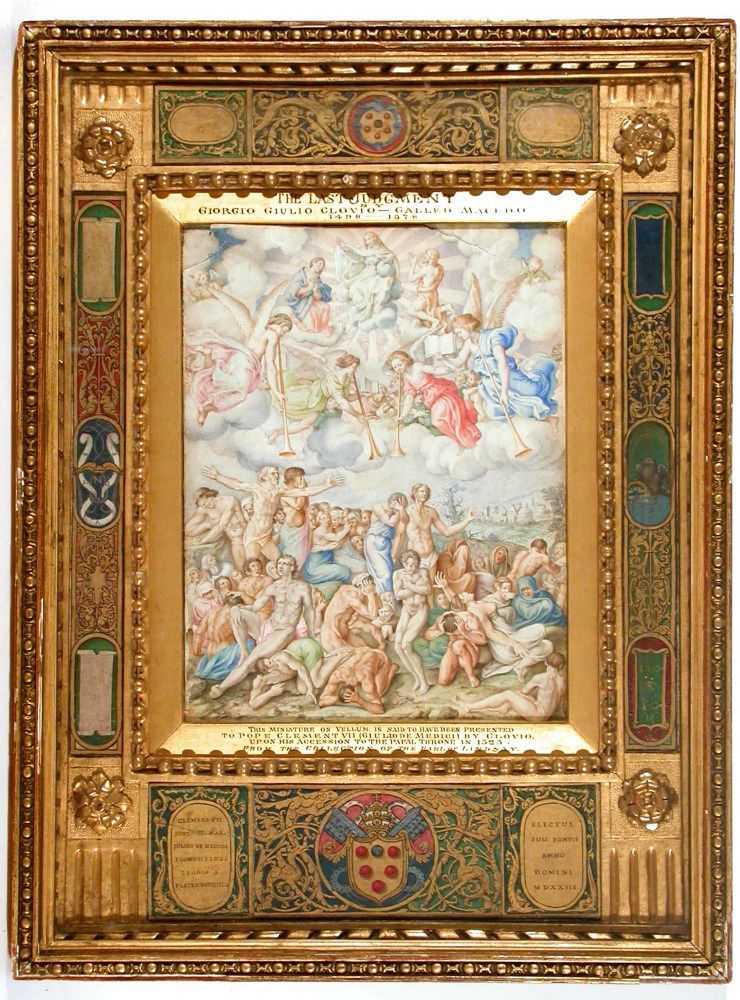
Small Painting Is Huge Find: Appraisal Request Leads to Discovery of Renaissance Master’s Long-Unseen Work
As reported in the Times Union (Albany, NY), December 6, 2006:
By Leigh Hornbeck
Staff Writer
(c) 2006 Times-Union
SARATOGA SPRINGS – It could have been a scene right out of the television’s “Antiques Roadshow” a sweet old lady nervously placed a painting under the stern gaze of an appraiser and waits for his verdict.
The small depiction of Christ, the Virgin Mary and St. John the Baptist seemed too bright to be authentic. If it was real, the ornately framed work under antique dealer Mark Lawson’s gaze was over 480 years old.
“I was hesitant because it looked so good,” said Lawson, who met the owner of the painting at his Maple Avenue offices in Saratoga Springs. Lawson knew as he looked at the painting in July 2005 that the natural dyes and pigments could outlast modern materials. Even a centuries-old painting could look new.
And authentic it was. A year after Lawson examined Giulio Clovio’s “The Last Judgment,” the Renaissance painting authenticated by Sotheby’s in London was sold by the auction house for $84,155.
Lawson said the elderly original owner of the painting lives in the Adirondacks, but he declined to identify her to protect her anonymity. The woman was paid $60,000 after commissions were taken out of the purchase price. Lawson, 47, made antiques his hobby as a child and has worked as an appraiser for 15 years. His finds include a Rozenberg Art Nouveau eggshell porcelain tea service that sold for more than $42,000. He also handled a Gibson Les Paul guitar wrecked on stage by Jimi Hendrix.
Gregory Rubenstein, the head of Old Master paintings at Sotheby’s, said the painting was a fascinating find. “It turns out that Clovio was born in Croatia, and there aren’t many famous 16th-century artists for whom you can say that,” Rubenstein wrote in in an e-mail.
Lawson turned to the experts at Sotheby’s, first in New York City and then in London, for help authenticating the piece. He traveled to the city carrying the painting with him and high-resolution photographs were made there and sent to London.
“There are experts in master works of art and specialists within that specialty,” Lawson said.
One of the first tests was to compare the painting to another one of Clovio’s paintings, of the same Biblical image, on display at the New York City Public Library, Lawson said he hoped to find close, but not identical comparisons. If the figures–Christ flanked by the kneeling Madonna and St. John the Baptist with four angels playing trumpets–were painted in the exact same way, it was likely a copy. If they were similar, the work was more likely to be authentic.
According to Rubenstein, when word spread in the art world the previously unknown painting had surfaced, it drew the attention of the Croatian Ministry of Culture. Before the auction, the Croatian ambassador came to Sotheby’s to see the painting and representatives of the government were the successful bidders at the auction.
“There was a huge amount of coverage in the Croatian press, and the work was even taken to the national parliament and formally presented there,” Rubenstein wrote.
According to an inscription on the frame, which Lawson estimates was made in the early 1900s, the painting came from the collection of Scotland’s Earl of Lindsay and had previously been presented to Pope Clement VII upon his ascension to the papal throne in 1523.
While Sotheby’s authenticated the painting as one of Clovio’s, possibly created with a partner, the auction house could not substantiate the inscription. The history of the piece is also veiled in mystery and questions abound. It’s unknown how the miniature painting made its way from the Vatican to Scotland and then to the U.S. Collectors also wonder in what places the painting has hung over the past five centuries.
Lawson said the seller knew very little about the painting and found it in storage.
“These investigations are like police work,” he said. “The most commonsense answer is usually the correct one. Someone probably bought it at an auction somewhere along the line and then the family forgot about it.”
